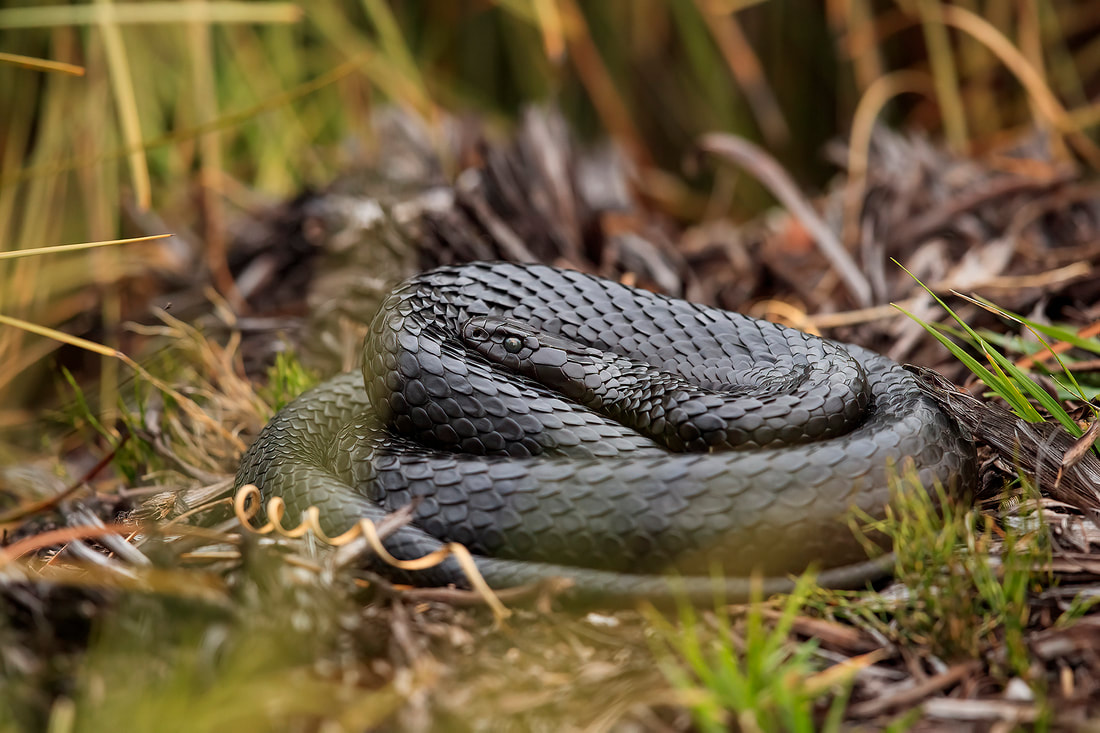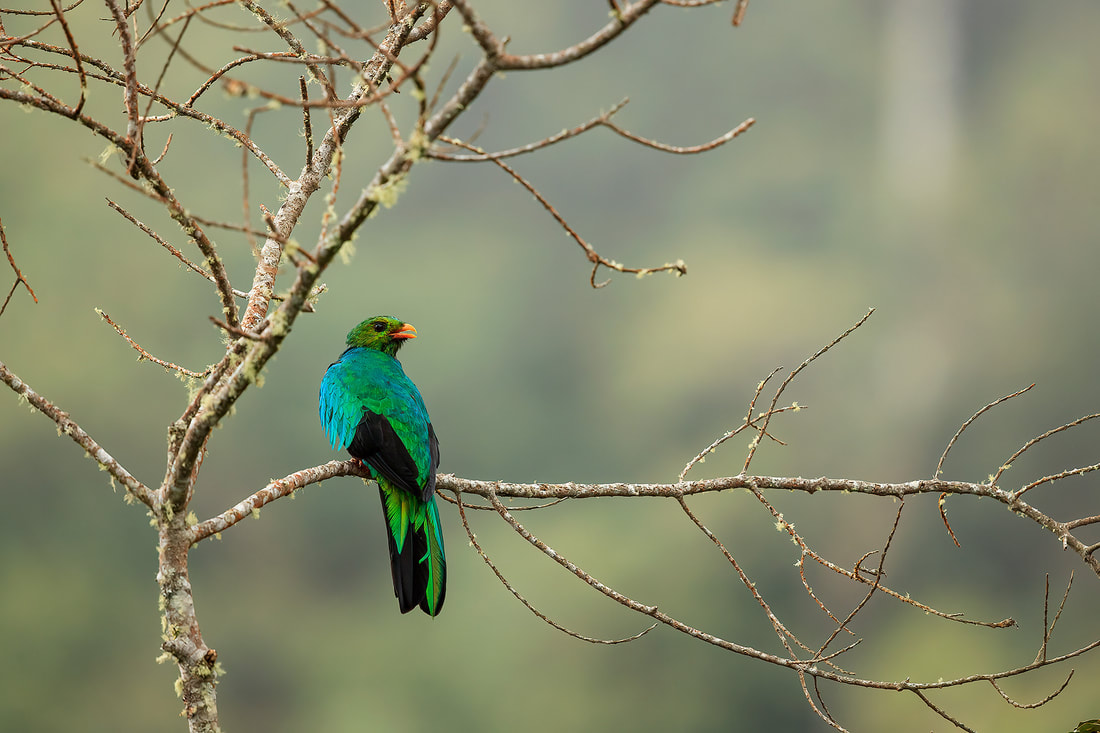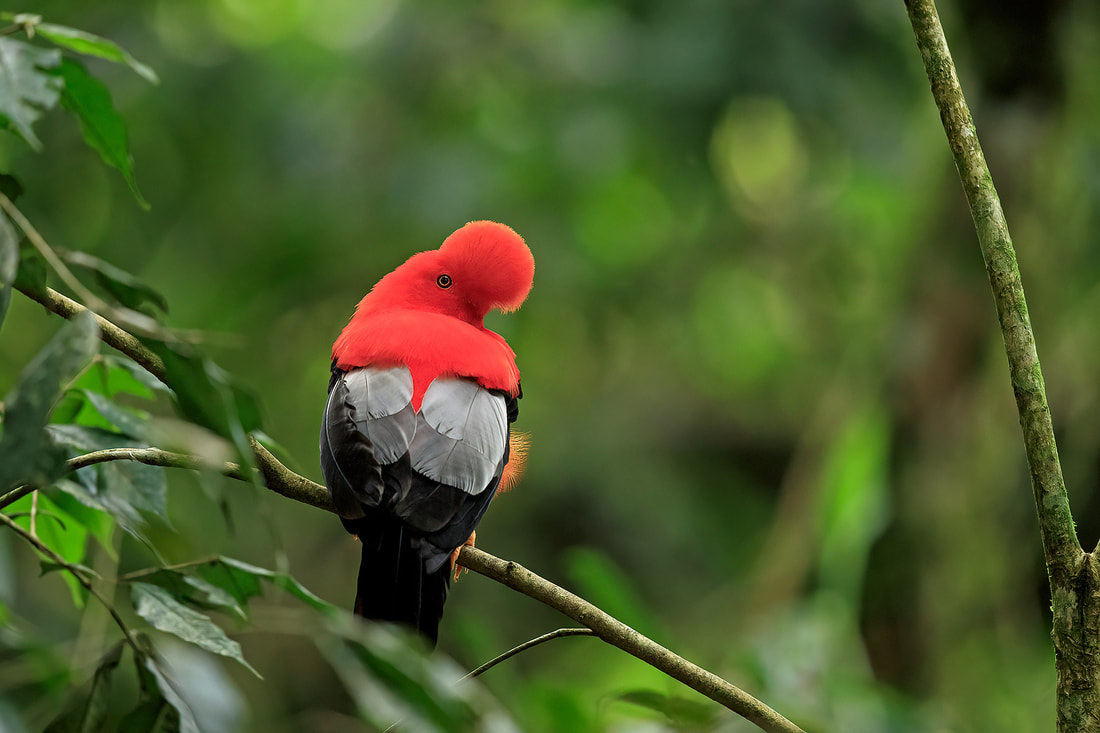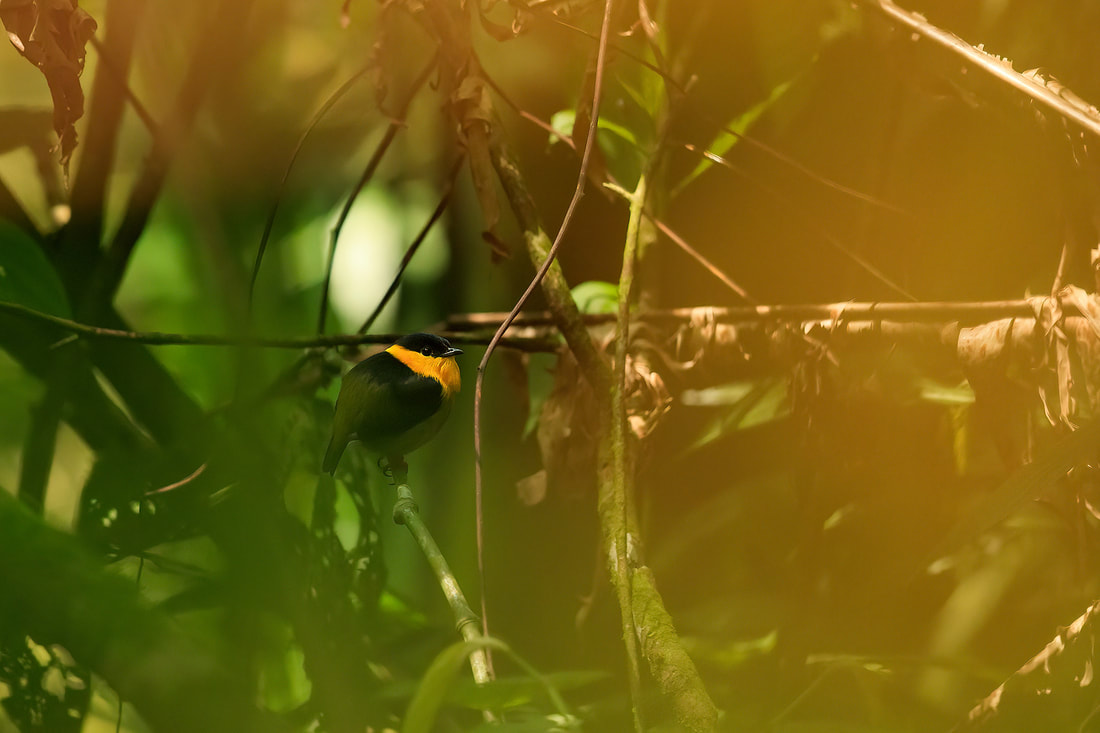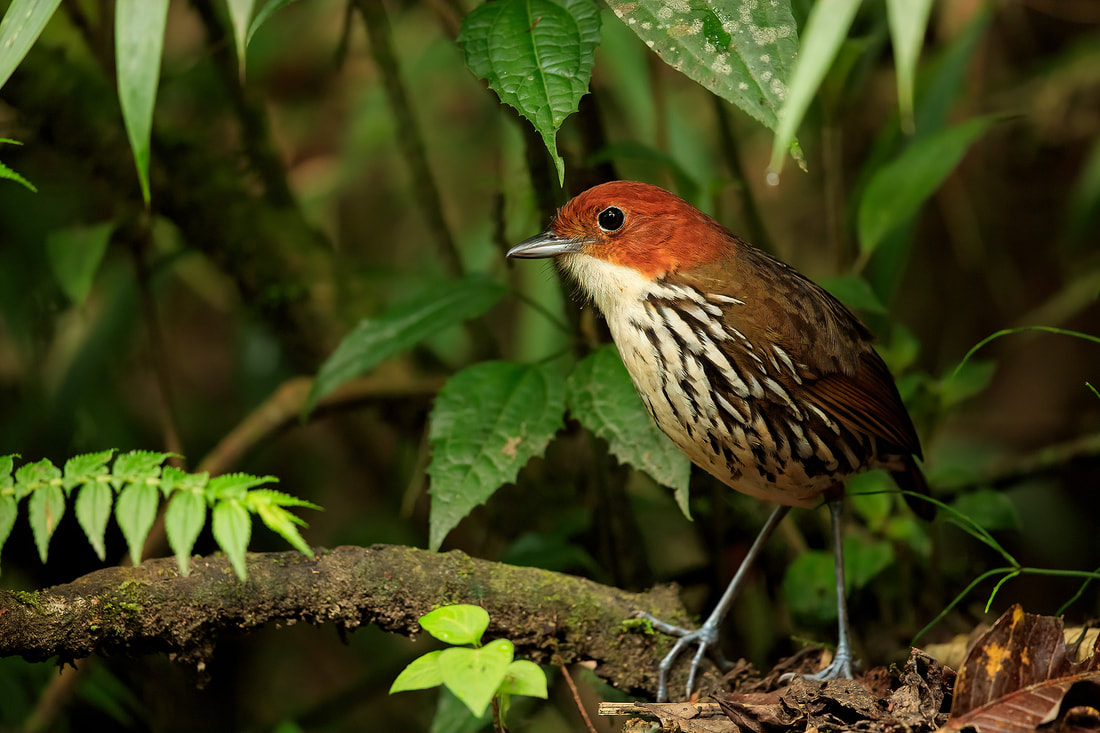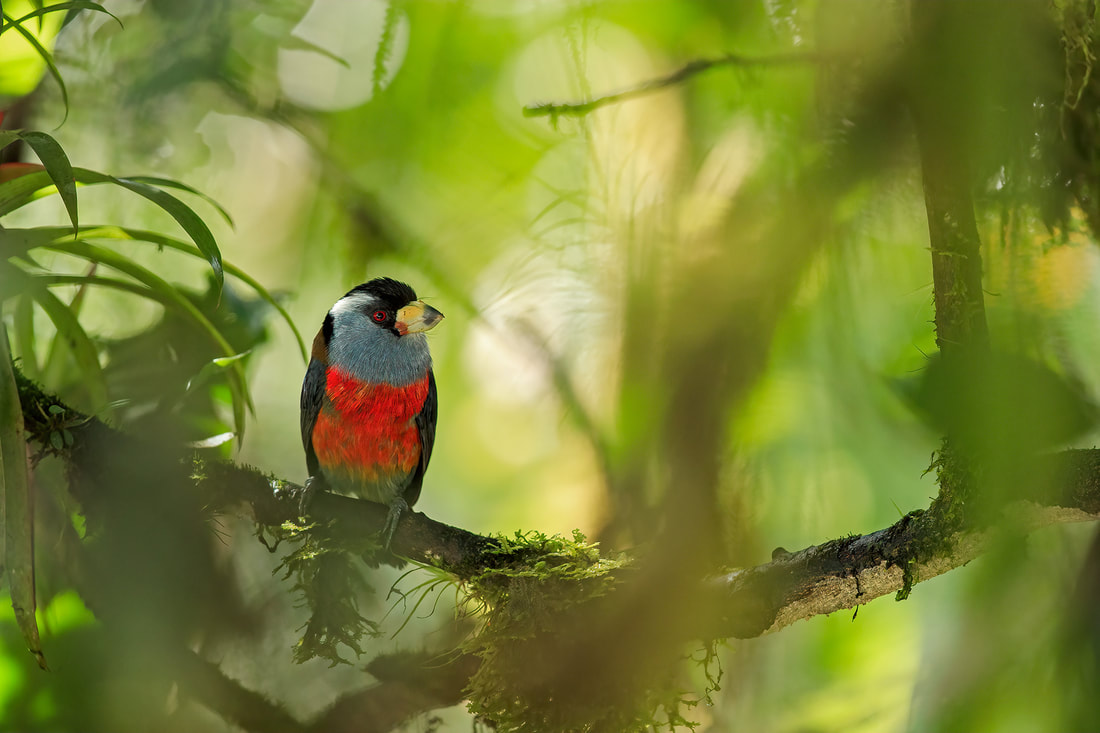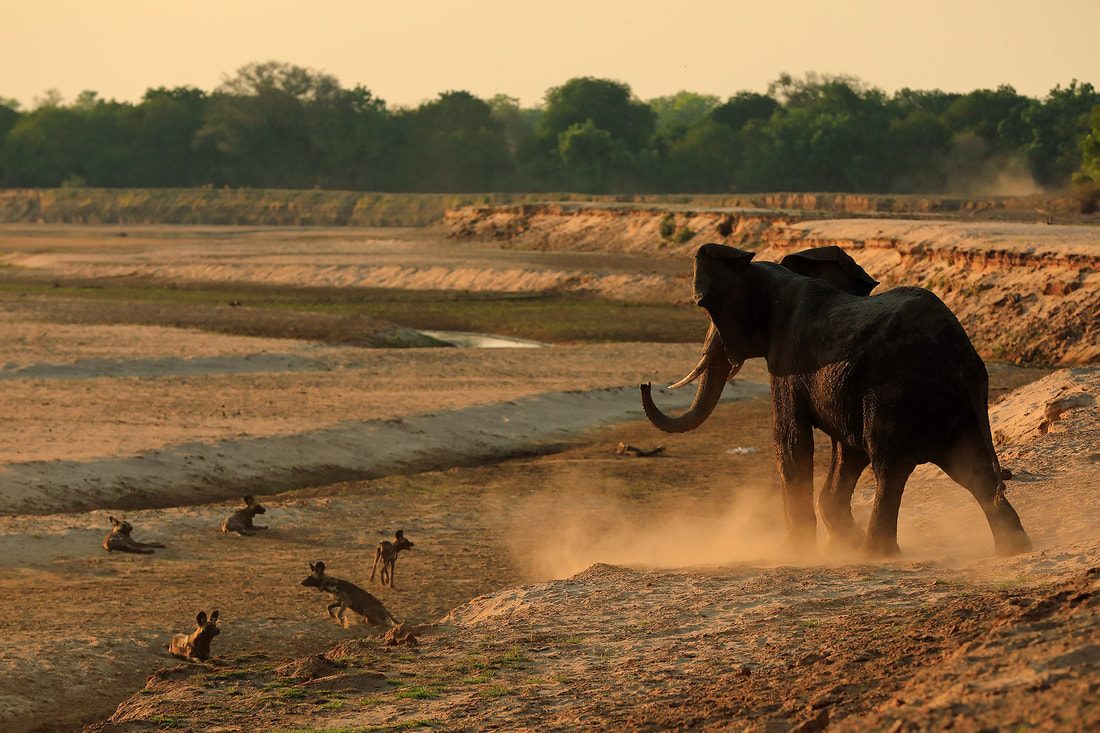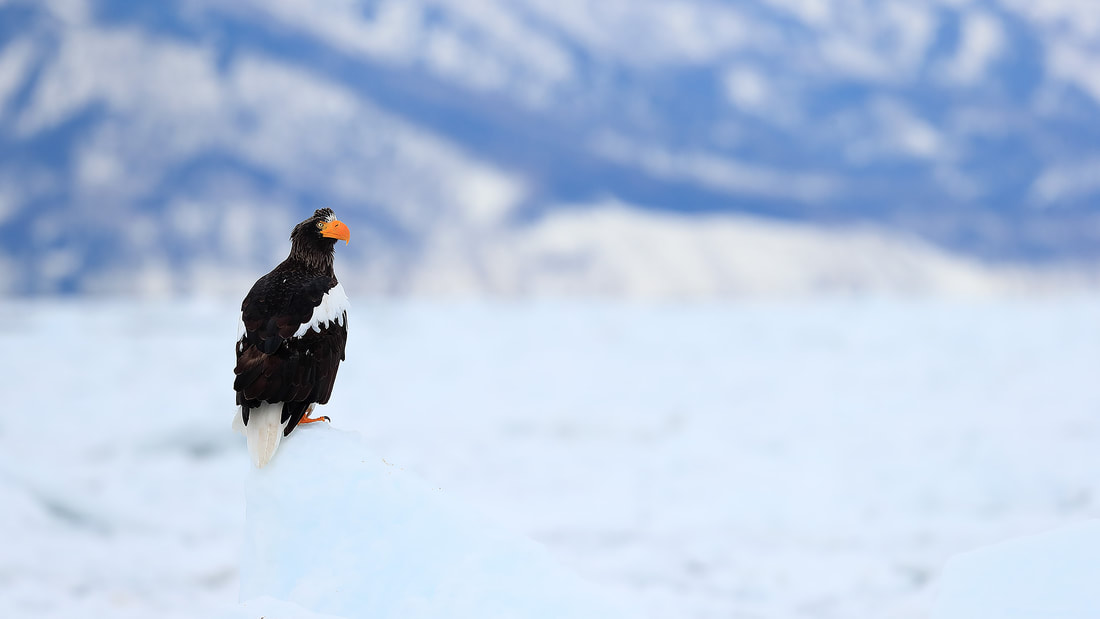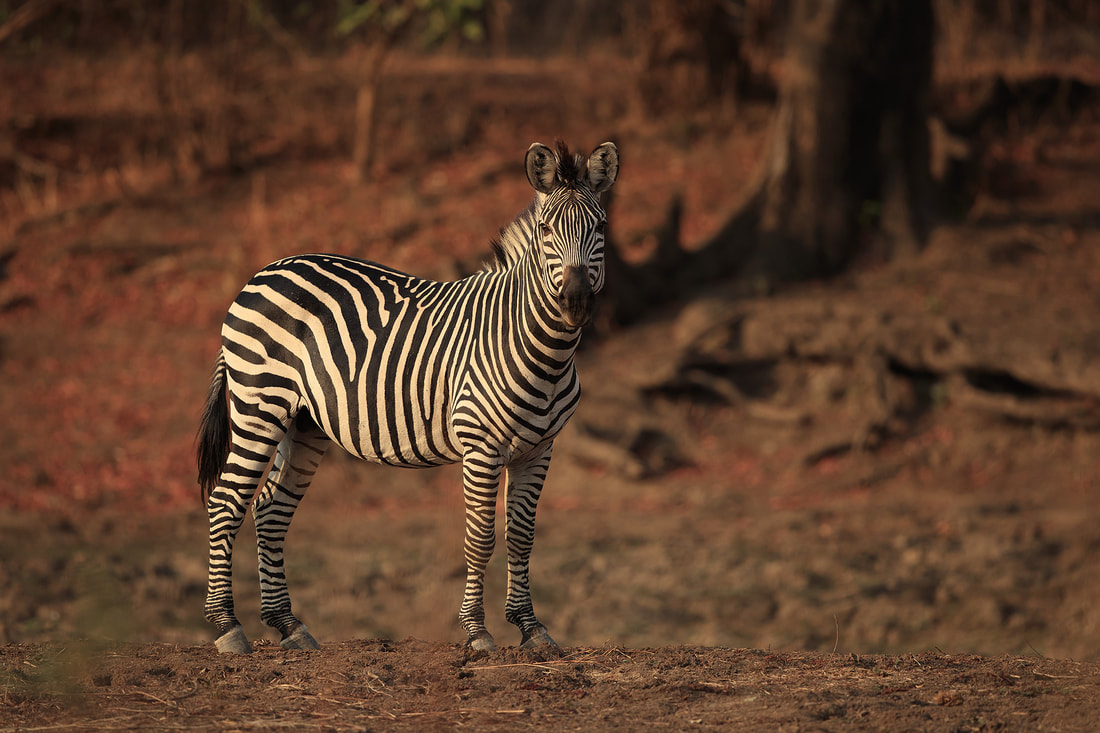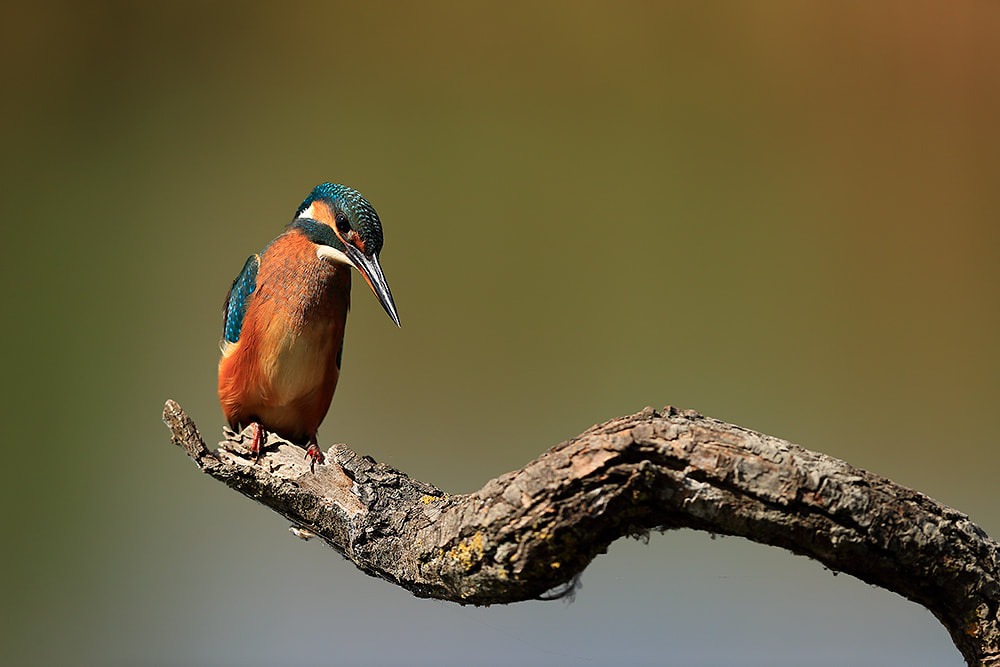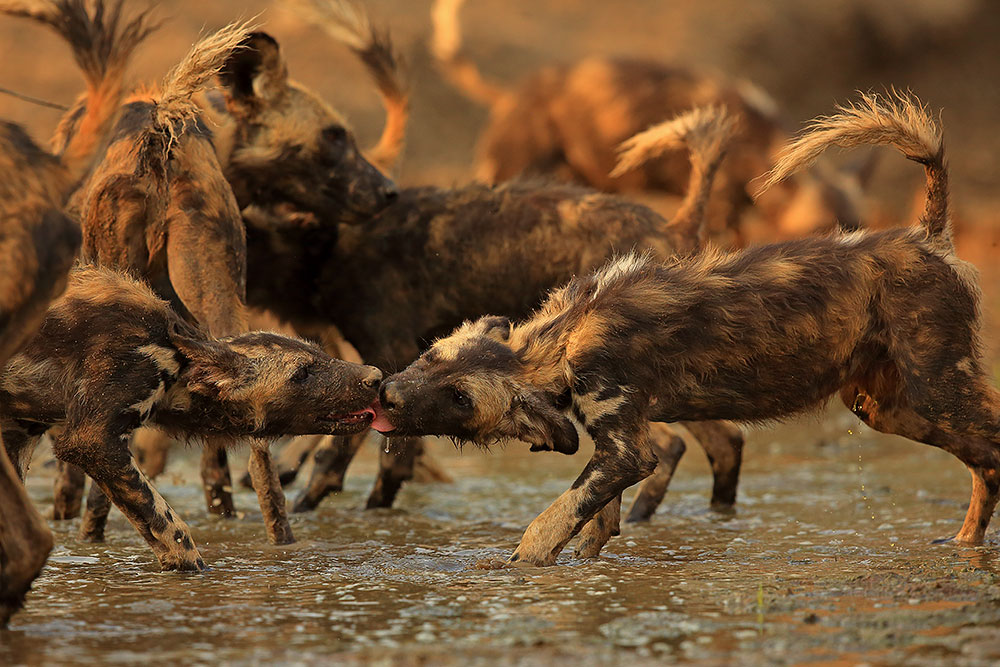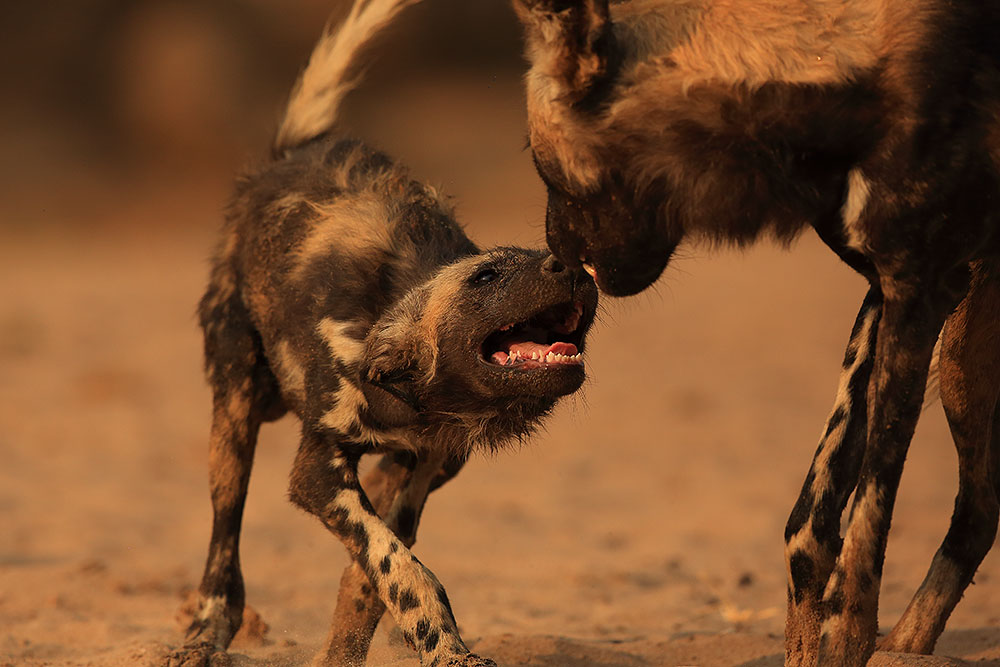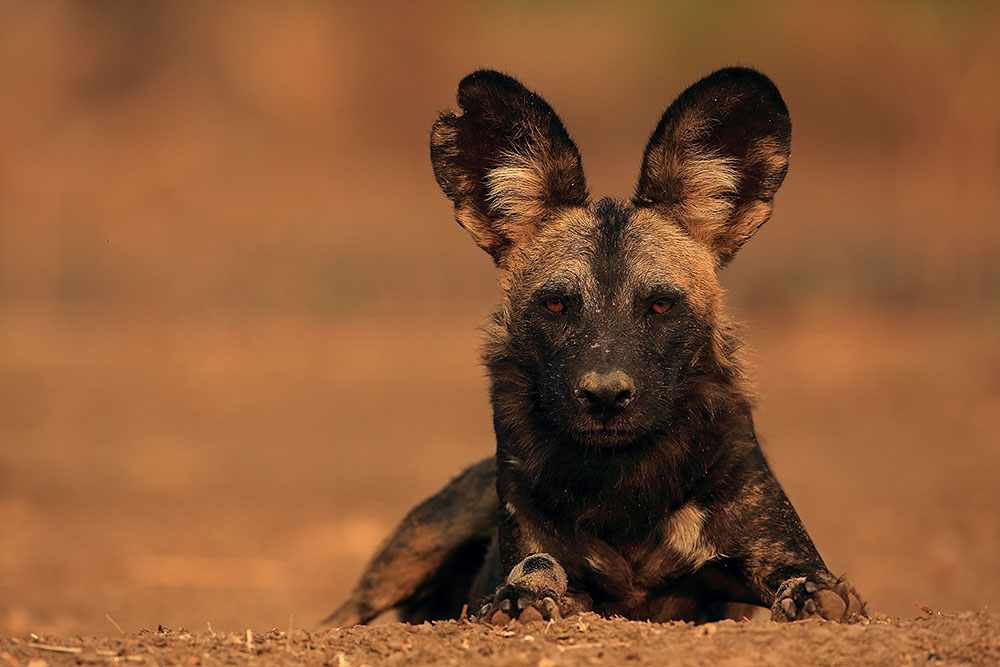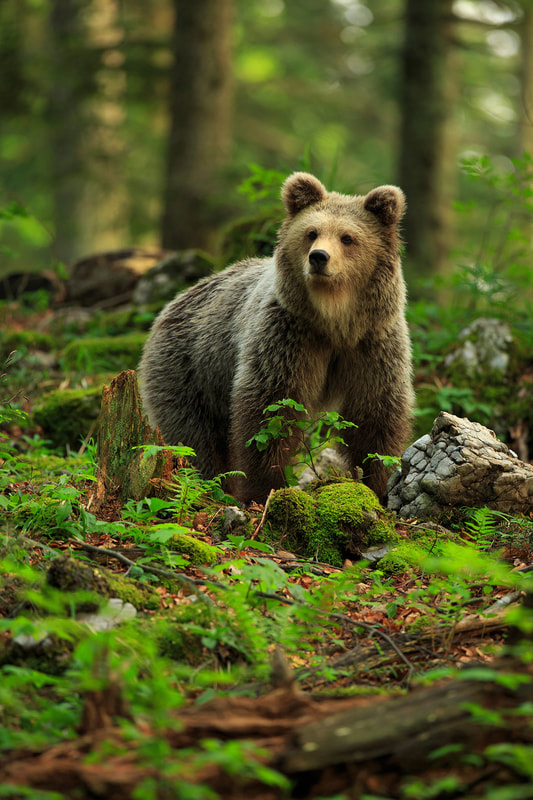|
Back at the start of April I was privileged to be on the guiding team for the Wildlife Worldwide Festival of Wildlife to Tanzania. We took over the delightful Ndutu Safari Lodge for a week and enjoyed some absolutely amazing wildlife encounters and accompanying photography opportunities. I was lucky enough to join the pre-tour extension to the Ngorongoro crater, but to keep this blog as concise as I can, I will focus on the photographic highlights in and around Ndutu. It really kicked off with an incredible attempted lion hunt after the most incredible thunder and hail storm. A lioness walked within yards of my vehicle, before eventually trying to hunt a herd of wildebeest, albeit unsuccessfully. It actually turned out to be a week of lions - we seemed to trip over them in each and every direction we travelled. What was great was that we actually were able to enjoy the lions being relatively active. This isn't typically the case with Africa's largest big cats, and so you have to make the most of these opportunities as and when they present themselves. What makes Ndutu such a fabulous place to base ourselves, was the wildlife that surrounds you while you're in camp. It's not always about the bigger things, sometimes it pays to sit in the comfort of the lodge and wait for the wildlife to come to you. Of course, the smaller things were followed by some amazing male lions ... For me, the absolute highlight of the trip was as we watched the sun set over Lake Ndutu. Giraffe were wading across the shallow water, while greater flamingoes sieved the rich waters through their beaks with the golden hues silhouetting them. Suddenly, someone spotted a cheetah and we were off, only for the cheetah to be immediately overshadowed by another shot. 'Caracal!' - I've been working in the safari industry for 14 years and this was my first every sighting of a caracal - just remarkable. As well as the more obvious mammals, the plethora of birdlife was exceptional and as such the photography was incredible. We timed our arrival perfectly, as the great migration was still in full swing. Although it's very hard to do it justice (photographically speaking) - unless you're in the air - it was a real privilege to see it out on the great plains. Of course, to finish things off, we had to have some more lions. In all seriousness, I was blown away by the numbers of lion here. Having travelled a fair bit in eastern Africa, I think this must be among the highest density of lions around. As I am sure you will agree, it was one heck of a trip. The Festivals are a real celebration of the wildlife, our wonderful clients and the team too. I won't be one of the leaders on the next iteration, but you can find out more about the trip to Falklands & South Georgia here.
0 Comments
I absolutely love being in the Antipodes as the wildlife here is not only unique, but it is utterly captivating, and so it was a delight to head back and spend another couple of weeks searching for and photographing some icons. Just as we did in the previous trip, we started on the mainland of Australia, photographing wildlife in the state of Victoria, before flying across the Bass Strait to Tasmania. Around the city of Geelong, we enjoyed photographing a wealth of wildlife including corellas, emu, eastern grey kangaroo, grey-headed flying fox and koala too. After a fantastic few days photographing the wild delights of the mainland, including some Australian oddities, we hopped on a plane from Melbourne down to the city of Launceston in Tasmania. From here we headed to the Tasmania arboretum for some great platypus sightings and photography. We then headed up into the hills and spent the next five days just immersing ourselves in the wild world of Tasmania's rugged mountains. Here photographic highlights included tiger snake, wombat, wallabies and several endemic birds. We headed back down from Tasmania's Highlands back down towards the coast and stopped once again at the Tasmanian Arboretum. We thought our previous visit was remarkable for the platypus encounters we enjoyed, but this time it was exceptional. The absolute highlight was a pair of platypus fighting after an attempt at mating. Over the next few days we continued by exploring the north-east of Tasmania, enjoying more wonderful photography opportunities including Forrester's kangaroos. After a great period photographing in the northern reaches of Tasmania, it was time to head south towards Hobart. We spent an evening in Hobart, primarily as a rest stop, before heading over to Bruny Island the following day. Here, we would be staying close to the Inala property and our hope was to photograph some of the region's iconic birdlife including the forty-spotted pardalote. As you can see, we had a magical couple of weeks photographing some of Australia's most sought-after species. It was great to be back in the bush and seeing some of my favourite Aussie wildlife.
Where do I begin? Well, firstly I must say that I have been utterly useless in keeping the blog up to date. An awful lot has happened in the past 4-5 months, including moving house to the Scottish Highlands, leadings tours left right and centre and of course, photographing the world's magnificent wildlife. Anyway, enough about that, it is finally time to finish off sharing my imagery from Colombia. Enjoy! To start with, I am sharing a few images of the charming Chami and chestnut-naped antpittas. These charming little birds have been habituated above the historic town of Jardin in the western Andes of Colombia. Both birds were the perfect posers and we were able to enjoy some fabulous photography. After spending around an hour in the cloud forest photographing these magnificent birds, we descended down to the road which gave us another incredibly special species, the yellow-eared parrot. Here it sat atop of the most magical perch, the only downside was the rogue tendril beneath this beautiful bird. We then continued further along the road, spending the morning in the surrounds of a local garden. This lovely garden, perched on a hill-top with spectacular views of the cloud forest above and farmland below, was a haven for countless species. The highlight was undoubtedly having fantastic views of the golden-headed quetzal. As well as exploring above the town of Jardin, we were able to visit the Andean cock-of-the-rock lek situated on the river that runs along the town's edge. It is possible to find up to 20 different males showing off as they try to attract a mate. Making an awful racket, they do their best to show off their magnificent plumage. This really is a spectacle and the photography opportunities are exceptional too. With time nearly running out on this bird photography extravaganza, we had one last day out in the field trying to find yet another endemic species. This time, we were in Parque Nacional Natural Sumapaz and our target bird was the green-bearded helmetcrest. The weather had taken a turn for the worst at this high-altitude paramo habitat, and so we searched for this diminutive species of hummingbird in the freezing rain and strong winds. We really struggled to find any adults in their finest plumage, but were instead spoiled with exceptional views of a pair of fledglings. This was arguably even more special than seeing an adult as these youngsters are rarely seen.
I hope you have been enjoying this series from the trip I led to Colombia for Wildlife Worldwide? For the third instalment I am taking you higher in the Central Andes in search of some real specialities. We left Manizales and started our climb ever higher up to Nevado del Ruiz - a towering volcano home to a variety on habitats and countless species. Our first stop was the charming hillside property of Hacienda el Bosque. This working cattle farm has committed to protecting its high altitude forest and is actively planting corridors to help wildlife flourish on the property. It is little wonder that the property is a haven for numerous rarely seen species including the flammulated tree-hunter, grey-breasted mountain toucan and hooded mountain tanager. First up though was the equatorial antpitta at a feeding station before we went in search of the spectacular array of hummingbirds. What an incredible start to our day at the hacienda. In my opinion it only got better as the real stars made their appearance a little later on ... It was time for the grey-breasted mountain toucans and hooded mountain tanagers to put on quite the performance. As I am sure you can see, the photography was exceptional thanks to our magnificent subjects. I was blown away by the photography opportunities and the birds were just stunning. From here, we headed further up the mountain in search of higher altitude species including an endemic hummingbird - the buffy helmetcrest. In fact we were also treated to incredible views of tawny antpitta, lacrimose and scarlet-bellied mountain tanagers and rainbow-bearded thornbill. We were incredibly spoilt, but it is important to highlight the amount of time that has to be put in to get the images you are after. I hope you have enjoyed looking through these images and discovering the wonderful birdlife that calls Colombia home. I really can't recommend visiting the Central Andes enough - it is a birder's and photographer's paradise.
Find out more about the trip on the Wildlife Worldwide website and book your place under the expect guidance of Ben Sutcliffe. It has been another action-packed year for me. With the travel sector back in business, I was busier than ever (making up for lost time) leading tours left, right and centre. With such a busy year, I haven't really had time to focus on my own projects, but I was able to capture a few wonderful moments when out in the field with clients. So with that in mind, I thought I would share my 'Top 5' images from the year of 2022. I should add that these are in chronological order and just a small selection of some of personal favourites. In case you haven't yet realised, I really love taking portraits of wildlife. I would love to know which is your favourite. The wonderful thing about photography is that it is completely subjective. My decision making behind this selection is probably biased, as my memories of each moment are likely to change my perception of the image itself. Anyway, I do hope you enjoy them.
2023 promises to be another busy year and I will do my utmost to keep this blog up to date. In the mean time, I have two more posts to come from my Colombia tour, another focusing on South Luangwa in Zambia and a final one from Australia. Happy reading! I know. It has been a while since I last posted about the wonderful bird photography tour I led to Colombia for Wildlife Worldwide. I left you after photographing the absolutely beautiful toucan barbets of the western Andes. Today I am going to whisk you further north towards the city of Manizales and share with you a kaleidoscope of new colours and forms. Of course, with this being a bird photography tour, if you aren't a fancier of our avian friends, I suggest you wait for my upcoming blog on Zambia's South Luangwa National Park. So to start you off easy, here are a couple of images taken from the Tinamou private reserve. The first was the diminutive golden-collared manakin. This tiny bird was incredibly challenging to photograph and my entire group had to work extremely hard to capture a 'record' shot - it was definitely about trying to capture it in its thick rainforest home. The second bird from here is the striking bar-crested antshrike. After a couple of days exploring the trails and gardens of Tinamou, we headed across Manizales to the protected area of Rio Blanco Reserve. This cloudforest habitats has been set aside as a water catchment area for city below and in turn provides a refuge for numerous sought-after bird species. It is particularly well known for several species of antpitta - the most photogenic of these was undoubtedly the chestnut-crowned antpitta which was a perfect poser. The whole group were treated to some exceptional photography opportunities from only yards away. After a morning with the antpittas we spent a prolonged period around the garden feeders, which attracted numerous hummingbirds such as buff-tailed coronet (the most common visitor) and the star bird which was the long-tailed sylph, alongside a number of other passerines. As we descended down the mountain back towards the city of Manizales, we came across our first roadside hawk of the tour - it posed perfectly as everyone snapped away - providing some wonderful photography opportunities. Further down the steep road, we stopped at a small reservoir's dam and immediately saw the handsome white-capped dipper. Like the roadside hawk, it posed beautifully for a brief moment on the dam wall. As we neared the bottom of the steep-sided mountain and crossed the river, our guide Juan spotted a torrent duck. These birds are notoriously hard to approach and tricky to photograph, but we were in luck as the bird was preoccupied with chasing a pair of white-capped dippers. The male duck was just the perfect subject as it came back and forth, stopping atop of numerous rocks with the lush forest-clad banks behind. As I am sure you are starting to appreciate, Colombia is a birder's dream and as a wildlife photographer I think it is equally a rewarding. My group all took such a wide gamut of images, capturing numerous species in flight, feeding and just in their habitat. What more can you ask for?
I will try and bring you the next instalment within the next couple of weeks. In the meantime, you can read my tour report from the trip and find out more information on the Wildlife Worldwide website. It seems like things are slowly returning to normal for those who work in the wildlife travel industry. With things continuing to look up, I was delighted to be at the helm for Wildlife Worldwide's Colombia Bird Photography tour. We flew direct from London to Bogota and then on to the city of Cali across the central Andes in the Cauca Valley. It is important to note that Colombia is home to more birds than other country on Earth and the photography opportunities my group were treated to, were quite simply exceptional. I am going to share some of my images from the trip, spread across a few different instalments. I feel this is the only way to do this amazing country and the spectacular birdlife justice. On our first day, we spent a few days around the lodge's grounds and were blown away by the number of hummingbirds, tanagers, woodpeckers and even toucanets. The next day we moved across the mountain, high above the city of Cali where we hoped to photograph the elusive scaled antpitta and the massively sought-after multi-coloured tanager (see below). For our third day of bird photography in the Western Andes we headed to a known spot for toucan barbet. Here we were treated to some more incredible photography and the whole group just lapped it up. These stunning birds were all photographed over a period of three days in Colombia's Western Andes. I was using my Canon 1DX II with my Canon 500mm f4 L IS II USM lens.
Keep your eyes peeled for the next instalment and be sure to find out more information about the tour on the Wildlife Worldwide website. N.B. I will not be leading the 2023 departure for this tour as I am away in Brazil, leading for Wildlife Worldwide. Sorry I have been quiet again for the first quarter of the year. It has been a crazy few months and I am only just getting the time to sit back and think about the past 5-6 months. Back in November I was in a state of shock as I was actually able to enjoy leading my first African photo safari in nearly 2 years. Wildlife Worldwide were finally able to run our unique South Luangwa Photo Safari and it was a pleasure to be at the helm for two separate trips. Our first trip was based at one of my regular haunts – Flatdogs Camp – where I had the pleasure of my good friend and guide Bwalya looking after us. We had an exceptional week with Bwalya, although the leopard didn’t quite play ball, and were treated to some excellent encounters with the African wild dogs and countless lions. The second week was based at the delightful Mfuwe Lodge and we had some exquisite sightings of leopard and the wild dogs once more. The rains had started to fall intermittently, but it really didn’t disturb our game drives and huge thanks must go to our excellent guides . One of the great things about South Luangwa is that you never really know what to expect and from one week to the next, you will likely see something completely different. Here is just a taster of what we saw … If you would like to join me in Zambia's South Luangwa with Wildlife Worldwide, there are still some spaces available. I will be joined by fellow photographer Sean Weekly, and I will be back for more in 2023.
Richmond Park is one of the jewels in the Royal Parks' crown, a wildlife haven in the heart of one of Europe's largest conurbations. Red deer, little owls, badgers and even ring-necked parakeets. I spent numerous weekends journeying up the A3 early to photograph the red deer rut, meeting friends and enjoying the cool autumnal air - the photographic opportunities were excellent. As you can see, the photographic highlights are not only limited to the red deer that call the park home. Above you can see an image of a jackdaw, arguably one of the UK's most beautiful corvids and a ring-necked parakeet (an introduced species from the Indian subcontinent). The deer stags are well known for thrashing their antlers in the bracken, and other undergrowth, when they are pumped full of testosterone. In this case, he took it all a little far and then struggled to see where he was going. This individual stag was not one of the dominant males, and he will probably have to wait another year or two to reach his absolute prime. As you can see from the images above, the red deer often stand proudly as the sun rises over the horizon, seemingly basking in the soft morning light. It was a great few weeks enjoying the wilder side of London and as long as you avoid the crowds, you can expect to see some spectacular behaviour. Next year, if I get to lead my planned tours (if Covid allows), then I won't be able to photograph this annual spectacle.
I remember seeing the first images of Japan in winter around 10 years ago, but I had no knowledge of the country and very little idea about the wildlife. However, at the start of 2019 I was asked whether I would like to lead Wildlife Worldwide’s inaugural photography tour to the country, during the snowy winter months, focusing on red-crowned cranes, Steller’s sea eagles and of course the much-loved Japanese macaques (or snow monkeys). Firstly, if you decide to visit Japan, I can’t recommend Japan Airlines enough - they were truly exceptional. The majority of Japan’s wildlife is concentrated along the main island’s central spine or on some of the smaller, wilder islands such as Hokkaido. This is where my group spent the majority of their time, on the beautiful snowy island of Hokkaido. We had wonderful sightings of whooper swan and red-crowned cranes during the first couple of days on the island. We had the chance to see a pair of Ural owls in the nearby forests and numerous woodland birds (many of which are recognisable to those from Europe). For me though, the species I was most looking forwards to seeing was the impressive Steller’s sea eagle. Let’s just say I wasn’t going to be disappointed … We didn't have the best light for our time in Japan, particularly with the cranes - it was either too gloomy or too bright. Fussy photographers are a pain, but it does make such a big difference. It was really gloomy for my time with the swans, so I didn't really get anything worthwhile, but it was lovely just to watch them. After our time in the island's volcanic interior, it was time to head to the coast in search of Steller's and white-tailed eagle. After heading out in to the see ice to photograph the eagles, we headed south towards a frozen lake for more eagle photography. There was also an opportunity to enjoy the glorious birdlife around a traditional onsen. The highlights here were the Japanese pygmy woodpecker, the Japanese sable (a member of the marten family) and the Blakiston's fish owl (the largest owl in the world). After an amazing week on the island of Hokkaido, enjoying the snowy conditions and stunning wildlife, it was time to head back to Tokyo. We spent a night in Tokyo before heading into the main island's centre to the city of Nagano. To be more precise we headed to the town of Yamanouchi, the perfect place to base ourselves for photographing the famed 'snow monkeys' or as they should be known, Japanese macaques. Sadly, there was a bit of a heat wave in the mountains and snow was rather lacking for the most part. So what can I say about Japan. Well, quite simply, it is fantastic. Don't expect to be on your own, there will nearly always be other people about, but it is still somewhere I recommend highly. For the opportunities to see Steller's sea eagles alone it is worth it. Be sure to join on Wildlife Worldwide's Japan's Winter Wildlife photography tour.
It was my final week in Zambia, with my third group from Wildlife Worldwide arriving. It was another fantastic week and we were treated to some remarkable sightings. It was a week of lions, leopards, buffalos, elephants and new-born impala. We were blown away by some incredible game drives, with mating lions, a complete leopard hunt and lions gorging on numerous buffalo carcasses. Once again, I am going to leave you with the images to do the talking. Enjoy! The first days were all about the big cats, but there was so much more on offer throughout the week ... As the week progressed it seemed that we had a bit of a leopard fiesta, the sightings increased in the last couple of days and provided some excellent photography opportunities. If you would like to join me in Zambia's South Luangwa National Park, there are still a few places left in 2021. You can find out more and book your place on the Wildlife Worldwide website, alternatively please contact me for more information.
It was my third week in Zambia's South Luangwa National Park and I was well and truly in the groove. Being in the African bush is where I feel most at home, it has a hold over me like nowhere else. It was now I really felt in tune with my surroundings and really in sync with the wildlife of this remarkable national park. It was my second tour of the season leading for Wildlife Worldwide and it was another delightful group of people. Our local guide was Bwalya, who's love of photography and wildlife was immediately apparent. This week turned out to be the week of leopards and lions. We were blessed with numerous encounters and sightings and rewarded with some fantastic photography opportunities. Once again, rather than going in to too much detail, I will simply let the pictures do the talking. As you can see from all of the images, my group and I were blessed with some amazing sightings. In fact, for me South Luangwa offers such incredible variety and world-class photography opportunities. These are only a taster of what we were able to enjoy, but I hope it inspires you to join me in 2021 (there are still a few places remaining). You can book your place here.
Back in September I went on a trip for Wildlife Worldwide to Romania’s Danube Delta (for the first time). I had heard great things about Europe’s largest river delta and knew whatever happened, I would experience somewhere completely different to anywhere I had been before. I stayed at the purpose-built property known as Ultimate Frontiera. Specially designed for wildlife photographers , the purpose-built hides are spread across the estate and provide the opportunities to photography a myriad of different species. On my first morning in the hides I was hoping to photograph the pygmy cormorant, an elusive and rarely seen species. I did get a couple of shots of pygmy cormorant, but it was a common kingfisher that proved to be a real delight, posing perfectly in front of the hide only a few metres away. I have tried photographing kingfishers in the UK and never had any luck, whether it be from purpose-built hides or sitting patiently on a river bank. So, finally, to be rewarded with shots like this was a real treat. It wasn’t just kingfishers that proved to be particularly cooperative, we were treated to some great views of little owl, a wide variety of small woodland passerines, squacco heron and great white pelicans. We were even luckier in the fact we got to see a solitary Dalmatian pelican, of which there are fewer than 2,000 left in the world. It also proved to be a particularly reliable place to photography golden jackal, which are moving further west into Europe each year.
It was a great place for anyone with a passion for bird photography, and I can only imagine that during the spring it is full of life. I highly recommend you join Wildlife Worldwide in May to get your very own Romanian bird photography fix. I hope you like the pictures – and don’t forget to head off to Romania and see it for yourself! 2019 marks the third year in a row that I have led dedicated photography tours to Skomer Island in Wales for Wildlife Worldwide, focusing on the charismatic Atlantic puffin. This rocky outcrop in the Irish Sea is home to nearly 30,000 puffins and a staggering 750,000 Manx shearwaters. The weather on my two visits so far this year was pretty varied with sunshine, heavy rain and very strong winds all playing a roll. Sadly, during the evenings (when the puffins are most active) the weather was usually pretty dire – lots of rain, strong winds and sea spray. Of course, I still managed to capture a few other shots which are worthy of a little attention. So sit back, relax and get your annual puffin-fix below … I did have the privilege to enjoy one spectacular sunrise though and managed to capture some stunning shots of the birds as they returned to their nests. I also managed to get a few shots of razorbills, oystercatcers and guillemots. Be sure to join Wildlife Worldwide for Skomer's Perfect Puffins in 2020 - dates will be released in October so keep your eyes peeled. Depending on the dates I may well be back yet again.
At the end of the dry season, the heat in Mana Pools National Park just seems to build up and up. A natural crescendo, until eventually the rains come and bring a little relief. In early November though, the rains had still not arrived and day time temperatures were regularly hitting 44 degrees Celsius. Driving through the park on this particular morning, it felt like you were in the firing line of an industrial hairdryer, a stifling, warm breeze filling the air and making it feel a little uncomfortable. We were back in search of the wild dogs once more. Having spent the previous afternoon on the river, it seemed like we had to catch up with the dogs and find out what they were up to. However, no matter how hard we tried, we were unable to find the dogs on this particular morning. Instead we found a very sociable, and approachable, flock of long-tailed starlings. When a group of wildlife photographers are together, any slightly different subject just means you have something new to focus on. Later on we managed to find the small pride of lions, two adult females and a young male and spent a bit of time watching and photographing them before heading back to camp for lunch. The majority of the group decided to go out on the river once more this afternoon, all but one, who wanted to head out after the dogs once more. In order to keep the group size manageable for the canoe safari, I headed out with the one client and our guide Daryl. Well there is no other way to describe the afternoon with the dogs, other than that it was pretty magical. It was only going to be a shorter game drive/walk as we had arranged a BBQ on the banks of the Zambezi up stream of our camp. We found the dogs resting in the same drying river gulley we had left them a few days earlier. As there was only three of us, we slowly made our way towards the pack, taking our time and keeping the noise to a minimum. The whole pack were so incredibly relaxed and we were able to get extremely close. This encounter was right up there with my very best anywhere in the world, probably only coming second to coming face-to-face with the gorillas. I am not really going to say much more, other than that it was a real privilege. The following pictures and footage can do all the talking for me. If you would like to join me in October 2019, we still have a few spaces remaining. You can find out more and book your place by visiting the Wildlife Worldwide website.
I am really proud to work and lead trips for Wildlife Worldwide, one of the UK’s largest specialists in wildlife travel. What I particularly enjoy is that the office is set within an old barn in the charming village of Bishop’s Sutton, what’s more is we have a resident pair of barn owls.
Earlier on in the summer I spent a bit of time trying to photograph the owls. They are really easy to spot, but not so easy to photograph, particularly as there are quite a few buildings around. Anyway, here is a little taster of what I have been privileged enough to watch after finishing work in the evenings. That's right folks, I have been to Skomer once more and it still isn't enough. It is never enough!!! My third and final visit of the year was leading Wildlife Worldwide's second Skomer's Perfect Puffins tour in 2018. It as a roaring success and I was joined by acclaimed photographer and film maker Ben Cherry - check out his awesome work here. Now then, normally a visit to Skomer Island coincides with gale force winds, lashing rain or perhaps ice blasts. Well this trip was a little different - it was quite literally like being on an island in the Mediterranean summer. To be succinct, it was sublime. To top it all off, we had a great group of people and some fabulous wildlife and epic light. You really cannot ask for more than that. So on to the pictures... When it comes to photographing puffins, it nearly always starts with a classic portrait. It is just good to get yourself warmed up, then you can start to be a little more creative and try a few different types of shots. For me, having already accumulated thousands of images of puffin, I now try to capture something different and this trip was no exception. What was incredible though, was watching the sun rise over the Pembrokeshire peninsula and setting over the Irish Sea, without there being a single moment it disappeared behind a cloud. So we enjoyed wall to wall sunshine from 4.45 all the way through to 22.00. Remarkable! It also wasn't just about puffins. When you have guillemots, razorbills and a friendly seal there are near endless photographic opportunities. After a the magic of being able to photograph the puffins in some wonderful light, our final excursion was out to Grassholm island in search of one of the world's largest northern gannet colonies. Here is just a little taster of what this remarkable place looks like... You can register your interest for Skomer's Perfect Puffins in 2019 here. Dates should be released by the end of October 2018 so please be patient.
My first photography tour of 2018 was to the beautiful country of Slovenia. In the middle of May, I took 8 clients with me to the Dinaric Alps, where everyone was hoping to photograph brown bear. This was Wildlife Worldwide's Brown Bear Photography tour. Now I need to make something clear from the start, Slovenia is one of Europe's hidden gems. It is a country filled with history, stunning landscapes and fabulous wildlife. To top it all off, the food is fantastic. Slovenia's Dinaric Alps, in the southern reaches of the country, are home to between 700 and 800 bear, one of Europe's most important populations. This karst landscape, filled with caves, disappearing rivers and lakes, also supports and array of other species including Ural owl, beech marten and even wolf. This trip was focused on the bears and the Ural owl, with of course the stunning mountains, wild flower meadows and charming villages as a wonderful backdrop. Over the course of the next 6 days we were treated to some superb encounters and all of the clients managed to capture some excellent images. After a great first night in the hides we went in search of the Ural owls and were blessed with some great encounters. Slovenia is home to the highest density of breeding Ural owl in Europe, so with a bit pf persistence, you can often come away with some good photography. The karst limestone landscape is famed for its caves and Slovenia is no different. If you read my last blog post on Slovenia (from last year), you will have seen that I visited Križna jama - a beautiful cave filled with water. We journey a few kilometres underground and explore the remarkable caverns and their unique rock formations. Of course, for most people it is all about the bears and that was this unique trip is all about. So all of the group spent the majority of their afternoons in the hides, waiting for the bears to show themselves. As you can see from all of the images above, Slovenia offers something very different from other bear watching destinations and it really is quite magical.
If you would like to join me on this amazing trip in 2019 then please head over to Wildlife Worldwide and find out more. All I can do is apologise for the lack of posts on this blog … there is no real excuse. Sadly, I haven’t been out with my camera enough recently and with a very busy year ahead leading a range of tours, I took a few days off and headed to Skomer Island with my old man. The trip was a Christmas treat for my dad, but it was also an excuse to get out there and try my new 1DX II and the new EF Canon 500mm f4 IS II USM lens. The main reason for going to Skomer is to spend time with the puffins. However, this year has been unseasonably cold and all of the seabirds seem to be a little behind their usual breeding cycle. The island’s plantlife has also been delayed, so we spent a few rather cold days in a pretty brown landscape. Let’s just say I wasn’t left disappointed as this provided something completely different to what you usually get on this rocky outcrop in the Irish Sea. I must say that the first day was a little wet. Scrap that, the rain was relentless and after only an hour out in the sodden landscape I was soaked through. We beat a hasty retreat back to the relative warmth of the island’s accommodation. I only took a few photos in the evening but the light was, well it was awful. The fact it was easier to photograph the island's large rabbit population, rather than the puffins, speaks volume as to the day's activities. The second day on the island was a completely different story – the Sun shone for the day’s entirety. And the photography opportunities were almost limitless. It wasn’t just the puffins that cooperated either, there were a myriad of other species who were keen to get their moment in the spotlight. The puffins were particularly quiet during the day, but as they are either sitting on an egg, or ready to lay said egg, or perhaps out fishing it wasn't a complete surprise. However, as the sun started to set I was blessed to an hour's worth of exquisite light, obliging birds and countless photographic opportunities. The above are some very low res version of the images I managed to capture in that glorious golden hour. They are only a sample of what I was able to capture, but I hope it gives you an idea of what you can do by playing around with light and trying out different ideas.
I will be back in Skomer in May and June this year, leading trips for Wildlife Worldwide, so keep your eyes peeled for more images in the coming months. Next week I am leading a trip to Slovenia's Dinaric Alps with Wildlife Worldwide - you can find out more about the tour here. Towards the beginning of June I was fortunate enough to lead a small group of photographers to the island of Skomer. This rocky outcrop, which sits just off the Marloes Peninsula, is one of the UK’s seabird strongholds and supports around 6,000 pairs of breeding Atlantic Puffins. These charming little birds are what most visitors come to see on Skomer Island and it certainly doesn’t disappoint. It has to be one of the UK’s finest wildlife experiences – quite simply it is hard not to smile when you see your first Puffin. Only about the size of a pint glass, these small birds are one of the world’s great ocean wanderers, their tenacity and dedication to their chicks is truly inspiring. They provide the perfect focus for this short photography break. I spent 3 nights on Skomer, having only planned on staying for 2. It turns out that my clients (and me) were experiencing some of the worst low pressure systems for many a year, we were stranded on the high cliffs of the island for an extra 24 hours. Although it was a little inconvenient it provided further opportunities to enjoy the island’s varied birdlife including 300,000 pairs of Manx Shearwater (only possible to see in the dead of night), thousands of gulls (Greater and Lesser Black-backed as well as Herring), Guillemot, Razorbill, Kittiwake, Short-eared owl and the list goes on. I thought I should give you a little taster of what this exciting trip is all about, so here are some of my favourite images from the trip. After arriving on the island around 1pm on the first day and then having a hearty lunch, we set out to photograph the Puffins at 'The Wick'. The Wick is famed for its large colony of Puffins, all along the top of a dramatic coastal inlet on the southern side of Skomer. As the afternoon went on the skies cleared and provided us with some spectacular light for photography (see below). The second day started quietly, as most of the Puffins had already left their cliff top burrows, they spend as much time as they can catching fish for the pufflings (yes that really is the name of the chicks). The light was already pretty bright, but the group managed to get a few images of a Raven and of course a few Puffins here and there. I was lucky enough to capture one image as a bird flew in across the water in the blustery conditions, capturing it all in a muddle in mid air. The afternoon proved to be another puffin bonanza, and many of the group tried their hand at bird in flight photography. This is known to be one of the hardest skills sets any wildlife photographer can learn, but photographing a bird this small in gusting winds is near impossible. However, a few of us got lucky and their persistence paid off. But there were also opportunities to photograph an obliging Oystercatcher and the Rabbits were about as tame as you can get! Having stayed on the island of Skomer for an extra evening, strong winds and poor visibility meant that no boats would be crossing over from the mainland. So after a morning of horrific weather, not even good for capturing images of Puffin in the rain, we headed out for one final time to add to our portfolios. For the most part, I kept my camera off, going around the group and making sure they were all getting what they wanted. So even with some of Britain's finest summer weather (by that I mean gale force winds and torrential rain), we managed to spend plenty of time with the 'clowns of the sea'. I hope to be hosting more Skomer photography trips in 2018, all in partnership with Wildlife Worldwide.
|
AuthorBret Charman Archives
July 2024
Categories
All
|

























